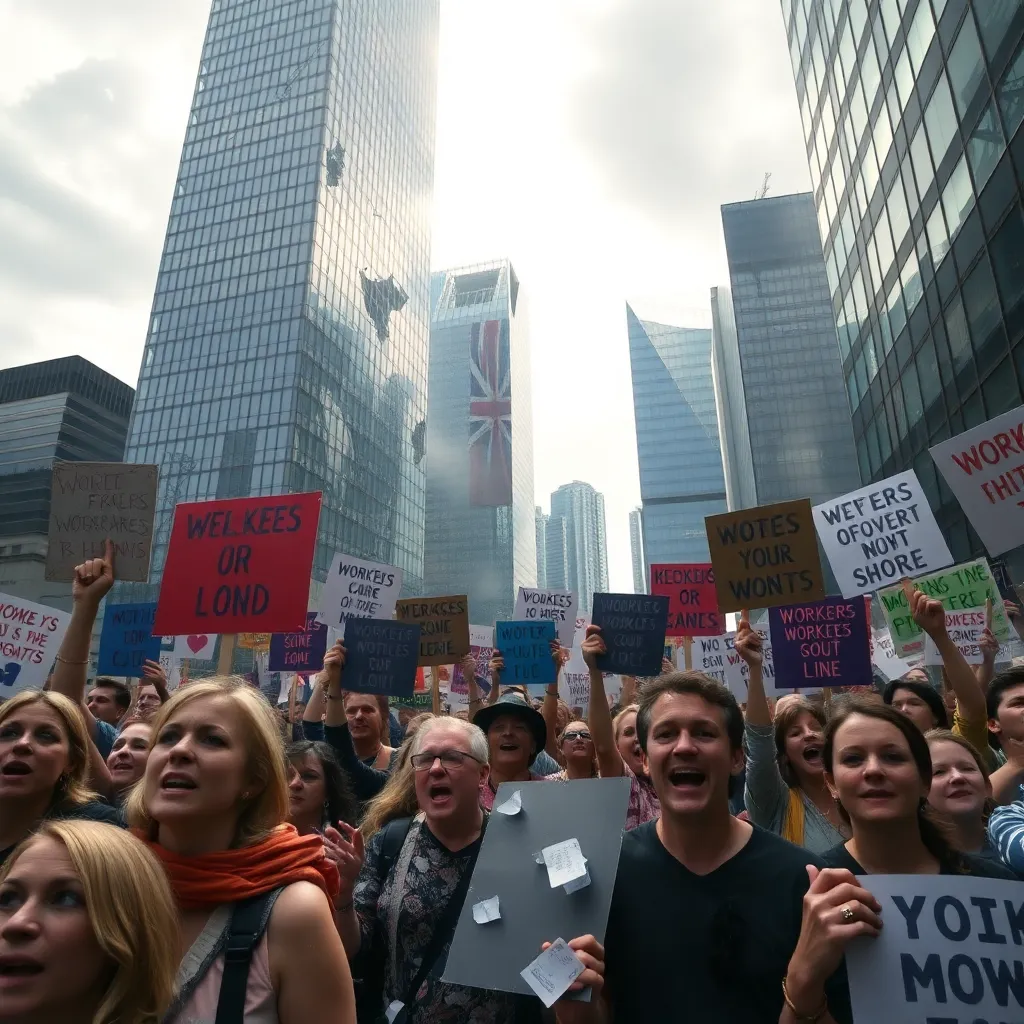When Strikes Go Wrong: The Perils of Protesting in a High-Rise Society
City of London, UK
In a tale that can only be described as a mix of unfortunate timing and extreme bad luck, residents of London have found themselves grappling with the aftermath of a series of protests that spiraled out of control. As union leaders rallied for better working conditions, a peculiar twist of fate saw their demonstrations inadvertently wreak havoc on the very homes of those they aimed to protect.
The Rise of the Protest Movement
It all started with what was meant to be a peaceful demonstration advocating for the rights of workers across various sectors. The aim? To demand fair wages and better treatment from employers who, as it turns out, weren’t exactly living in the same reality as your average Londoner. With inflation skyrocketing and rents reaching stratospheric levels, workers from all walks of life decided it was time to make their voices heard.
However, in a city known for its iconic high-rises, the protests took an unexpected turn. Reports have emerged that the strikes, which began with a unified front, ended up leading to the destruction of residential buildings. Yes, you heard that right! While union leaders were busy chanting slogans, the group’s energy somehow translated into a series of unfortunate accidents that left several families displaced.
The Great High-Rise Catastrophe
In what can only be described as a comedy of errors, the protests escalated beyond the control of their organizers. As strikers marched through the streets, a few too many enthusiastic participants decided that it would be a good idea to take their protests to the high-rises where many of their fellow strikers lived. With chants echoing off the glass façades, the atmosphere turned from solidarity to chaos in a matter of seconds.
Witnesses reported seeing protestors wielding placards that read “Workers of the World Unite!” while inadvertently causing structural damage to nearby buildings. One resident, who wished to remain anonymous, shared, “I was just trying to enjoy my morning coffee when I heard a loud crash. I thought it was my neighbor dropping a heavy pot; turns out it was the protestors trying to climb our building to make their point!”
The Aftermath: A Striking Dilemma
As the dust settled and the echoes of protest faded, the reality was stark: families were displaced, and homes were destroyed. Local authorities were left to pick up the pieces, while the protestors were left scratching their heads, wondering how their noble cause had devolved into an episode of London’s Worst Home Disasters.
The irony of it all is not lost on anyone. Here were the very workers trying to advocate for better living conditions, only to inadvertently destroy the homes of those who stood in solidarity with them. It was a classic case of “you can’t make this stuff up.”
The Official Response
In the wake of the chaos, city officials scrambled to address the situation. A senior official, who was initially appointed to oversee the protests, found themselves in a peculiar position of explaining how a peaceful assembly turned into a high-rise demolition derby. “We’re looking into it,” they stated, “but perhaps we should consider a new approach to protests, maybe something less… vertical?”
Meanwhile, the displaced families were offered temporary housing in local community centers, which, ironically, were also sites of previous protests. “I guess we’re just going to keep passing around the same issues,” quipped one resident, “just like a hot potato, but with more paperwork.”
A Lesson in Irony
As the community grapples with the fallout, one thing remains clear: when protests go awry, it’s not just the buildings that crumble, but also the very foundation of solidarity. The protestors’ message, once powerful and unifying, now risks being overshadowed by the very chaos they sought to fight against.
And so, as Londoners continue to reflect on the events of the past few weeks, there’s a growing realization that perhaps more traditional forms of protest—like sit-ins or pamphlet distribution—might be more effective than marching with a crowd that inadvertently encourages structural damage.
Conclusion: A Call for Change
The situation has sparked conversations about the necessity of strategic planning within protest movements. “Maybe we need to consider virtual protests,” suggested one local activist. “No one gets hurt, and the buildings stay intact!”
As the community rallies to rebuild what was lost, they are also reminded of the importance of unity—not just in message, but in action. Perhaps it’s time to channel that striking energy into more constructive avenues. After all, when it comes to advocating for change, it helps if the buildings don’t literally fall down around you.
In the end, London remains a vibrant city full of resilient people, ready to bounce back from even the most absurd of circumstances. Here’s hoping the next round of protests comes with a little more planning and a lot less collateral damage!
